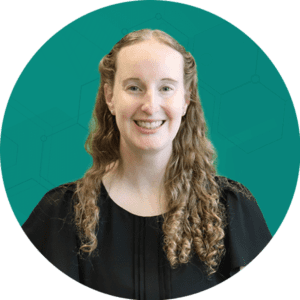
Anyone who works on search engine optimization (SEO) will tell you there are several types of SEO. Some only differentiate between on-page and off-page SEO. Others draw the line between white-hat and black-hat SEO.
Today, we’re going to cover:

Content SEO
Content SEO focuses on generating high-quality, helpful content, including text, images, and video. The content should help users and search engines understand your website’s purpose and offerings.
Content optimization should focus on your website’s users first. It can also result in better rankings on search engine result pages (SERPs). As a result, users will find your website more frequently and various organic performance metrics will improve.
There are three key focus areas to consider when you begin optimizing website content:
- Keywords: Incorporate specific keywords based on the types of search intent within your content. This will help search engines determine when to display your pages.
- E-E-A-T: Your content should signal experience, expertise, authoritativeness, and trustworthiness (E-E-A-T). This is an important ranking factor for Google’s algorithm. Make sure you signal E-E-A-T to both users and search engine spiders.
- Unique, helpful content: Generate content that is different from what already exists and seeks to solve users’ problems. Keep both uniqueness and helpfulness in mind when creating content for all pages. This includes everything from general URLs (like “about us” and blog pages) to shopping URLs (like category and product pages).

Technical SEO
Technical SEO involves a variety of strategies to make your site structurally sound. Optimizing your site in this way allows search engine spiders to more easily crawl and index it, making it more visible in search results.
It’s important to build this solid foundation before attempting to push traffic or backlinks to your site. That way, when traffic arrives, it lands somewhere that:
- Loads quickly
- Is easy to understand
- Provides a good on-page experience
Here are six recommendations to begin optimizing your website for technical SEO:
- Site speed: Make changes to improve factors like your page load time and time to first byte (TTFB). Check your pages’ stats with Lighthouse or Pagespeed Insights to know where to start optimizing.
- Image optimization: Resize, compress, rename, and add alt text to the images on your site.
- Structured data: This doesn’t affect your SEO. However, it can affect your click-through rates and visibility in SERPs. Review Schema.org for the types of markup that would best suit your site.
- Main navigation: Make sure your main navigational menu is succinct and makes sense. It is recommended to limit your site’s nav bar to 7 items, so it does not get cluttered or hard to read.
- Content placement: Ensure that each page on your site has unique textual content above the fold for Google to quickly and easily find.
- Internal links: Help search engine spiders understand how your pages are connected. Add internal links from one page to another. Use keyword-friendly anchor text to help users understand where your link will take them.

How Content & Technical SEO Work Together
Google’s ranking criteria include elements of both content and technical SEO. This makes it almost impossible to succeed by only focusing on one pillar of search engine optimization.
When creating your website strategy, be sure to allocate resources to both pillars to optimize your site holistically.
At ROI Revolution, our SEO teams include experts for each pillar. These experts work together to tailor strategies that elevate website performance.
Here are five types of SEO strategies that we recommend to achieve greater performance results.
1. Maintain SEO Value
When you make any major technical or architectural changes to your website, you risk losing SEO value.
If you plan to noindex or redirect URLs (technical SEO), make sure you don’t remove anything that includes valuable keywords (content SEO). If this content has to be removed, make sure you coordinate content updates to maintain that valuable copy elsewhere on the site.
2. Optimize Pages
From a content SEO perspective, integrate keywords based on search intent into your title tags, meta descriptions, headers, and content. From a technical SEO perspective, ensure that all relevant content on your page is readable by search engine spiders. The most important content should live above the fold.
3. Diagnose Issues
When there are performance issues or sudden declines for a client’s site, our teams work together to analyze different aspects of the website. To diagnose problems and make plans to optimize based on the issue, it’s helpful to have both content and technical perspectives.
For example, a technical analyst may notice that performance for a topic has declined in Google Search Console. They can share their findings with the content specialist. Then, the team can make plans to update or replace the underperforming content.
4. Build Internal Linking Structures
Internal linking helps users and search engines navigate your site and understand how its pages connect to each other.
Optimizing internal linking structures is often a group effort. A technical analyst has access to architectural data. A content specialist focuses on helping the user find content that matches their needs. At ROI Revolution, our SEO teams work together to understand and optimize existing linking structures. The ultimate goal is to maximize E-E-A-T signals.
5. Leverage Rich Results Opportunities
Google is always evolving and SERPs are becoming more dynamic. Rich results opportunities allow you to enhance users’ experience beyond the standard “blue link.”
Our SEO teams work together to identify areas of potential for rich results opportunities. We help brands optimize their site content based on relevant keywords. Then, we help implement appropriate back-end code enhancements. This all makes a page more eligible for rich results.
By optimizing for rich results, you:
- Make it easy for search engines to understand a page’s purpose and important information
- Create a more engaging experience for users on the SERP
- Help your pages rank for many more keywords

Tying It All Together: Types of SEO (Content vs. Technical)
Search engine optimization is an ever-changing game. It takes both innovation and collaboration to keep up. Our SEO teams continuously monitor algorithm updates and emerging technology to help websites stand out in organic search results.
With the rise of AI tools like ChatGPT, more emphasis on E-E-A-T, and new structured data opportunities, it’s no longer content SEO vs. technical SEO. We succeed by working together and combining our knowledge and skills.
We hope this breakdown has helped you understand the differences between the two main types of SEO. Utilizing content and technical SEO together can help you build a strong, revenue-generating digital marketing strategy.
To see how you can boost your website’s visibility with our SEO experts by your side, send a message to our team today.





